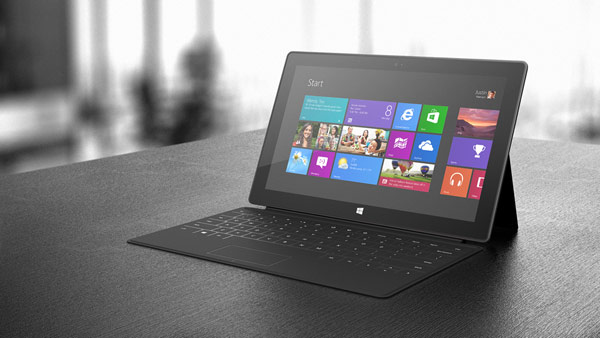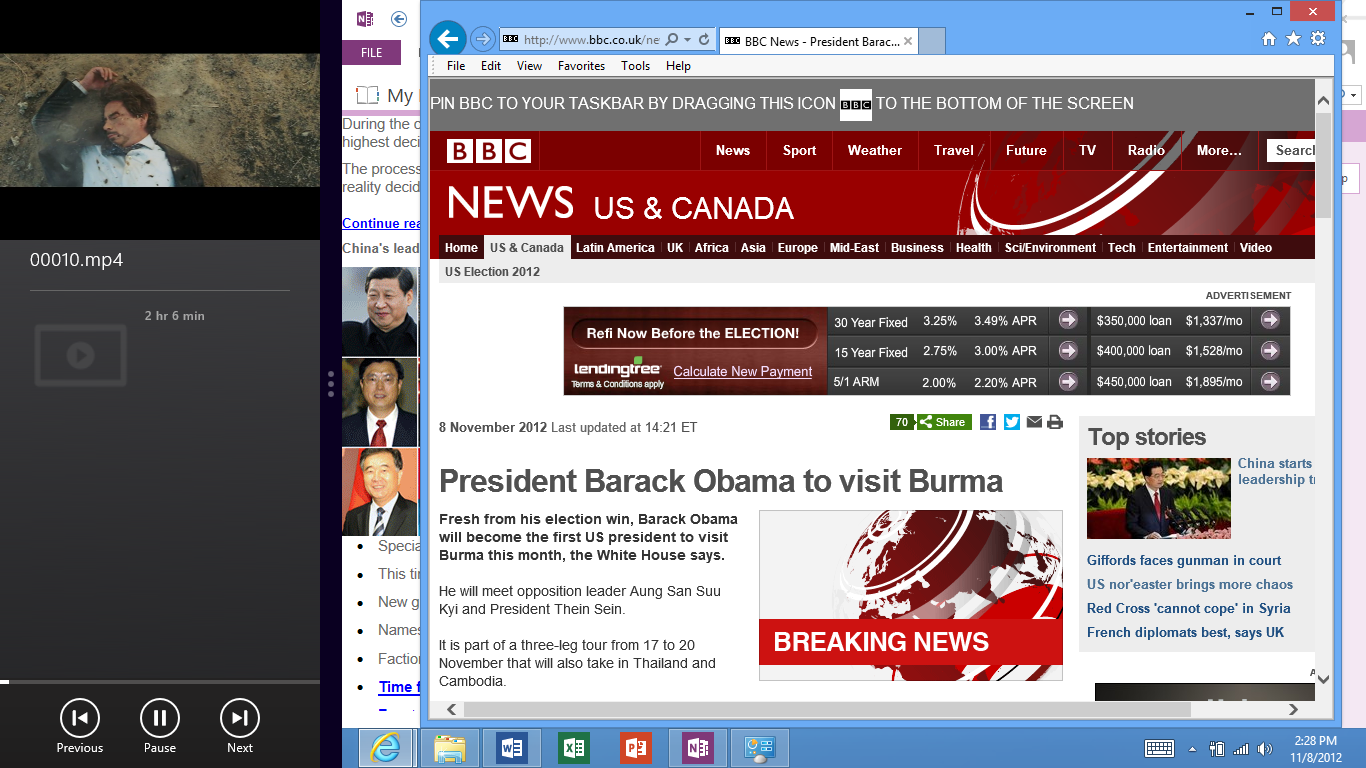Microsoft Surface Review, Part 2: Battery Life, Multi-Monitor, And More
Part 2 of our Microsoft Surface coverage includes tons of battery life analysis, a look at what it takes to slow down Tegra 3 in Windows RT, a demonstration of the first tablet able to extend the Windows Desktop, and some clarification of display quality.
We Like The Surface; We're Waiting For Surface Pro
Apple’s original iPad was introduced in April of 2010. Since then, we've only considered one tablet a serious competitor, and that was Google's Nexus 7. In fact, in The Nexus 7 Review: Google's First Tablet Gets Benchmarked, the plucky little seven-incher won the first award we've ever given to a tablet.
Thus far, though, we've generally regarded tablets as toys. Well, perhaps not toys in a literal sense, but we typically use them around our houses for playing mainstream games, browsing the Web, listening to music, and watching video. Those are all very common tasks, but they aren't productivity-oriented.
Tons of me-too products have found their way their way through our lab. The Nexus 7 was the one we liked most. But it remains a pure tablet. Even if it's more comfortable to hold than a big 10"+ model, more affordable than anything Apple could conceive, and part of a mature software ecosystem in Google Play, there are certain things it just doesn't do.
And then the Surface dropped into our lab, right on the day our pre-order promised it would.
Suddenly we had many of the luxuries we enjoy on the desktop. Only, we were using a tablet. Wait, whaaat? It immediately became possible to do things and work in ways that simply hadn't been possible previously. And for all of the hate Windows 8 has been receiving in the enthusiast community, we're switching over to it in the lab, and it's actually nice to see a common interface on our most powerful desktops and on the Surface.
Granted, Microsoft's first foray into the tablet space is not without its faults. Hardware-wise, the display is merely adequate, and Windows RT does so much that Android and iOS don't do that it's plenty easy to overwhelm Nvidia's Tegra 3 if you try using the tablet like an enthusiast might be tempted to. On the software front, there's Microsoft's Windows Store to contend with. No legacy Windows software allowed. In fact, only Microsoft's applications will run on the Windows RT Desktop. That's a pretty tough pill to swallow when we've just spent several more pages praising the company's work on the operating system itself.
With the few things we dislike aside, we continue to be bullish about using Microsoft's Surface as a replacement for the Ultrabooks and MacBook Airs we carry around with us to trade shows and meetings, along with the tablets we use around the house when we get home. Flip the cover up and drag our fingers around the way we'd use a tablet? Sure. Drop the Type Cover down, snap out the kickstand, and bang out some email? Definitely. Hook up a second monitor for some extra workspace in the office? Yes, please! We certainly can't say the same for any iOS- or Android-based device.
Get Tom's Hardware's best news and in-depth reviews, straight to your inbox.
One of the Surface's biggest advantages is its ability to multitask effectively. And yet one of its most glaring weaknesses is the Windows Store, with its limited selection of Windows RT-ready apps. We have to hesitate on a recommendation knowing the Surface Pro is coming soon. We're only afraid of what it's going to cost, given a steep price tag on a Surface with the Type Cover we like so much.
Current page: We Like The Surface; We're Waiting For Surface Pro
Prev Page Color Gamut Revisited: Illustrating The Surface's Weakness-
mayankleoboy1 Tegra3 is the biggest weakness in Surface. This SoC is already outdated.Reply
I wouldnt buy a device today which i know is going to be upgraded in a few months with atleast a better SoC, and probably a better display. -
tedx "Windows Internet Explorer (Not Responding)"Reply
Its comforting to see that not everything has changed with Windows RT. -
apache_lives Already have an ASUS Windows 8 RT tablet for the mrs -- she loves this thing, and from the lounge if my media center decides to play up i can use the tablet to remote desktop inReply
The ASUS also claims up to 16 hours battery life for theirs (im thinking less but still amazing if its 12+).
These things simply WORK -
kyuuketsuki apache_livesThe ASUS also claims up to 16 hours battery life for theirs (im thinking less but still amazing if its 12+).I'm assuming that's with the keyboard dock.Reply -
apache_lives KyuuketsukiI'm assuming that's with the keyboard dock.Reply
That is correct, but for documents and on the run its not a bad thing at all. -
besterino (Even though) being an hardware (PC) enthusiast I have bought the Surface (64GB, touch and type cover) for my wife and both she and I are seriously impressed.Reply
For her it is simply perfect: she can do with it all she would do with an ipad (she's not much of a gamer though) AND it actually replaces her desktop-PC... she's using office without macros and addins so the RT-Office is "good enough". She just plugs in an extra monitor and USB hub (for full-size keyboard and mouse), and she is all set for productivity. We did not experience any hardware limitation related issues (obviously office doesn't start as fast as it does on a x86 PC with SSD).
Based on our experience with the Surface RT I will definitely buy a Surface Pro for myself (I need Office with macros and addins for work) and hopefully finally have a PC that works both as a productivity tool as well as entertainment gadget. Yay! And *poof*, there goes the business notebook...
Too bad I will still need my desktop gaming rig (HD 4000 still not powerful "enough")... -
monsta The Asus Vivo Tab is much better than Microsoft's own version of surface, the display is much brighter, the keyboard dock has a battery, usb and SD card inputs. The battery life is amazing.Reply -
andrewcarr I hate when I'm looking at a computer screen and from that trying to see which picture is better of another computer screen. There seems a flaw in this logic.Reply

